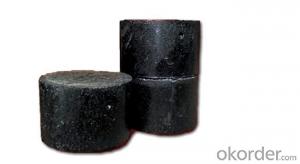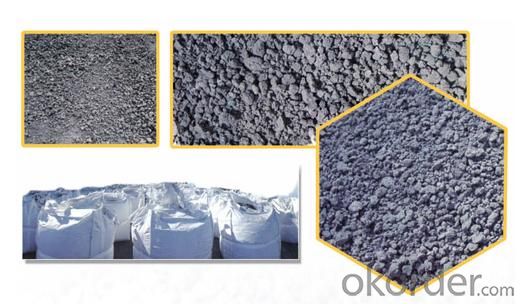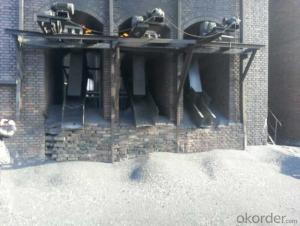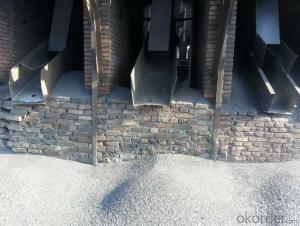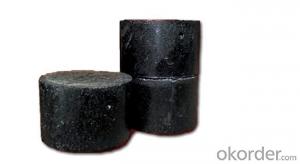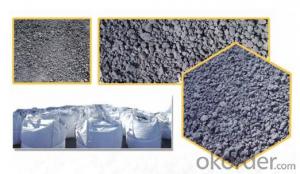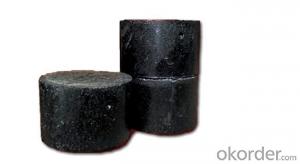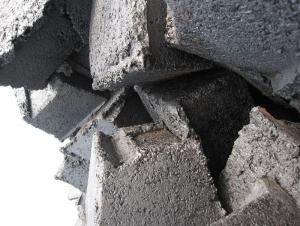Cylinder Carbon Electrode Paste With Dia 500/60MM
- Loading Port:
- Lianyungang
- Payment Terms:
- TT OR LC
- Min Order Qty:
- 20 m.t.
- Supply Capability:
- 800 m.t./month
OKorder Service Pledge
OKorder Financial Service
You Might Also Like
Cylinder Carbon Electrode Paste With Dia 500/60MM
Product Description
Carbon Electrode Paste is a self-baking electrode used in submerged arc furnaces for delivering power to the charge mix. Electrode Paste is added to the top of the electrode column in either cylindrical or briquette form. As the paste moves down the electrode column the temperature increase causes the paste to melt and subsequently bake forming a block of electrically conductive carbon. Electrode Paste is essentially a mix of Electrically Calcined Anthracite (ECA) or Calcined Petroleum Coke (CPC) with Coal Tar Pitch.
Features
1:carbon eletrode paste
2:for ferroalloy,calcium carbide manufacture
3:HS 3801300000,YB/T5212-1996,ISO9001:2008
Graphite/Carbon Electrode Paste Specification
| PARAMETER UNIT GUARANTEE VALUE | ||||||
| Ash.( % ) | 4.0 max | 5.0 max | 6.0 max | 7.0 max | 9.0 max | 11.0 max |
| V.M (%) | 12.0-15.5 | 12.0-15.5 | 12.0-15.5 | 9.5-13.5 | 11.5-15.5 | 11.5-15.5 |
| Compress Strength. | 18.0 min | 17.0 min | 15.7 min | 19.6 min | 19.6 min | 19.6 min |
| Specific Resistance | 65 max | 68 max | 75 max | 80 max | 90 max | 90 max |
| Bulk Density | 1.38 min | 1.38 min | 1.38 min | 1.38 min | 1.38 min | 1.38 min |
Picture
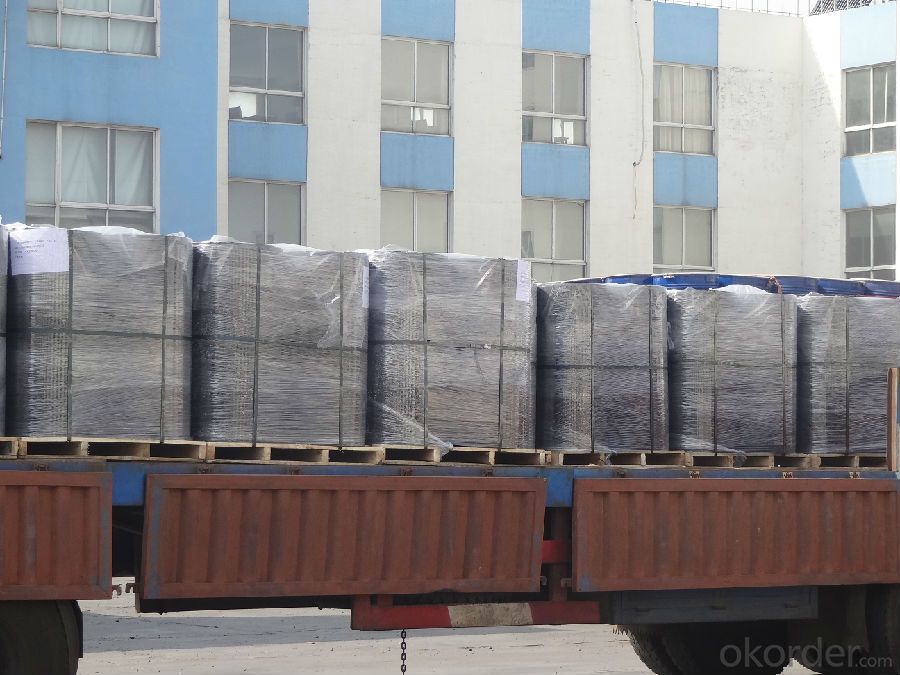
- Q: What is the density of carbon?
- The density of carbon depends on its form. The most common form of carbon is graphite, which has a density of 2.267 grams per cubic centimeter (g/cm³). However, another form of carbon called diamond has a much higher density of 3.515 g/cm³. So, it is important to specify which form of carbon we are referring to when discussing its density.
- Q: How do forests act as carbon sinks?
- Forests act as carbon sinks by absorbing carbon dioxide from the atmosphere through the process of photosynthesis. Trees and other plants take in carbon dioxide and convert it into oxygen, while storing the carbon in their trunks, branches, and roots. This stored carbon remains in the forest ecosystem, reducing the amount of greenhouse gases in the atmosphere and helping to mitigate climate change.
- Q: How is carbon used in the production of lubricants?
- Carbon is used in the production of lubricants as it forms the base of many lubricant formulations. Carbon compounds, such as hydrocarbons, are used as the primary ingredient in lubricants to provide lubricating properties. These compounds help reduce friction and wear between moving parts, thus improving the efficiency and lifespan of machinery and equipment.
- Q: How does carbon monoxide affect air quality and human health?
- Carbon monoxide (CO) is a colorless, odorless gas that is produced from the incomplete combustion of fossil fuels, such as gasoline, coal, and wood. It is a major contributor to air pollution and has significant impacts on air quality and human health. In terms of air quality, carbon monoxide is a pollutant known as a criteria air pollutant, which means it is regulated by government agencies due to its harmful effects. When released into the atmosphere, CO reacts with other pollutants, such as nitrogen oxides and volatile organic compounds, to form ground-level ozone, which is a major component of smog. High levels of ground-level ozone can cause respiratory problems, particularly for individuals with pre-existing respiratory conditions such as asthma. Furthermore, carbon monoxide is a potent greenhouse gas that contributes to global warming and climate change. It traps heat in the atmosphere and prevents it from escaping into space, leading to rising temperatures and altered weather patterns. In terms of human health, carbon monoxide is highly toxic. When inhaled, it binds to hemoglobin in the blood, reducing its ability to carry oxygen to vital organs and tissues. This can lead to a range of health issues, from mild symptoms like headaches, dizziness, and fatigue, to more severe conditions like chest pain, confusion, and even death. Vulnerable populations such as children, the elderly, and individuals with pre-existing heart or lung conditions are particularly susceptible to the harmful effects of carbon monoxide. Exposure to high levels of carbon monoxide can occur in various settings, including indoor environments where combustion sources like gas stoves, heaters, and fireplaces are present, as well as in outdoor areas with heavy traffic or industrial emissions. To mitigate the impact of carbon monoxide on air quality and human health, regulatory measures such as emission standards for vehicles and industrial sources have been implemented. Additionally, public awareness campaigns and the use of carbon monoxide detectors in homes and workplaces are essential in detecting and preventing potential exposure to this harmful gas. In conclusion, carbon monoxide significantly affects air quality and human health. It contributes to air pollution, including the formation of ground-level ozone and greenhouse gas emissions, which have adverse effects on respiratory health, the environment, and climate change. Understanding the sources, effects, and implementing appropriate measures to reduce exposure to carbon monoxide is crucial for protecting both air quality and human well-being.
- Q: How does carbon dioxide affect fuel efficiency?
- Fuel efficiency in vehicles is primarily influenced by factors such as engine efficiency, weight, aerodynamics, and driving conditions. Carbon dioxide, on the other hand, is a byproduct of burning fossil fuels, commonly used as vehicle fuel. When fossil fuels are burned, carbon dioxide is released into the atmosphere, contributing to the greenhouse effect and climate change. However, it is important to note that the increased concentration of carbon dioxide in the atmosphere does not directly impact fuel efficiency. Despite this, reducing carbon dioxide emissions remains crucial for mitigating climate change and promoting a sustainable future.
- Q: How does carbon impact the availability of sustainable agriculture practices?
- Carbon impacts the availability of sustainable agriculture practices by affecting climate change and soil health. Excessive release of carbon dioxide into the atmosphere contributes to global warming, altering weather patterns and making it harder for farmers to maintain consistent crop yields. Additionally, excessive carbon in the atmosphere leads to increased acidity in the oceans, affecting marine ecosystems and seafood availability. On the other hand, carbon sequestration through practices like agroforestry and regenerative agriculture helps mitigate climate change, improves soil fertility, and promotes sustainable farming methods. By reducing carbon emissions and adopting carbon sequestration techniques, sustainable agriculture practices can be more readily available and effective in ensuring long-term food security.
- Q: Why use carbon batteries for alarm clocks?
- Look at your clock is what kind of, some nickel battery (batteries) can also be a bit expensive. Lithium battery. And what in fact almost never mind, as long as you start voltage alarm on the line.
- Q: What are the impacts of carbon emissions on water scarcity?
- Carbon emissions have significant impacts on water scarcity as they contribute to climate change, which alters precipitation patterns and increases the frequency and intensity of droughts. Additionally, carbon emissions from industrial activities and fossil fuel combustion can lead to water pollution, further exacerbating water scarcity by degrading water quality and reducing available resources for human consumption and agriculture.
- Q: How is carbon used in the production of batteries?
- Carbon is used in the production of batteries as it serves as a key component in the construction of electrodes. It is typically used in various forms such as graphite or carbon black, which provide a conductive surface for the flow of electrons during the charging and discharging process. The carbon-based electrodes help enhance the battery's overall performance and increase its energy storage capacity.
- Q: What is sintered carbon?
- Sintered carbon is generally used as a filter element, and also of good quality, but very few, most of which are of poor quality.Sintering is the process in which powder or powder compacts are heated to a temperature below the melting point of the basic component and then cooled to room temperature at a certain rate and speed. The result of sintering is bonding between the powder particles, increasing the strength of the sintered body, and changing the aggregate of the powder particles into agglomerates of grain to obtain the desired physical or mechanical properties of the product or material.The sintering process refers to the processing program and the sintering process system selected according to the characteristics of the feedstock. It has a direct and important influence on the production and quality of sinter production.
Send your message to us
Cylinder Carbon Electrode Paste With Dia 500/60MM
- Loading Port:
- Lianyungang
- Payment Terms:
- TT OR LC
- Min Order Qty:
- 20 m.t.
- Supply Capability:
- 800 m.t./month
OKorder Service Pledge
OKorder Financial Service
Similar products
Hot products
Hot Searches
Related keywords
